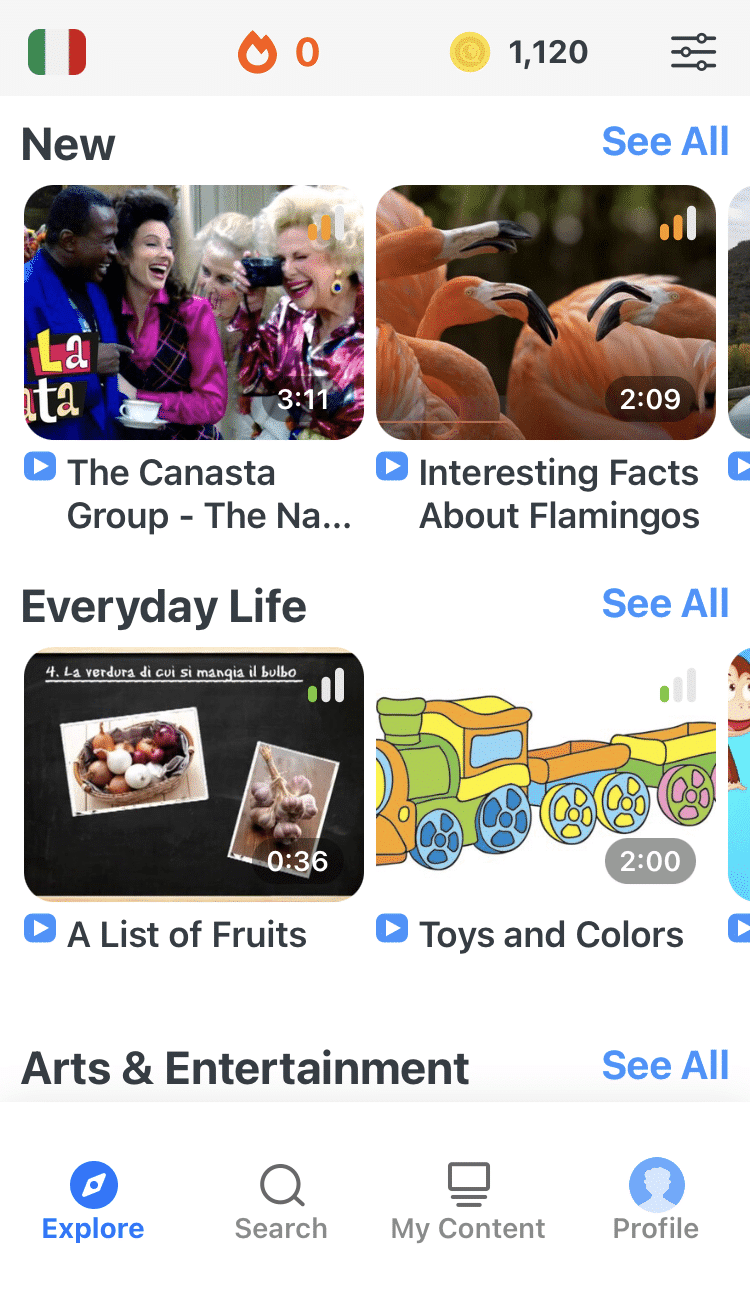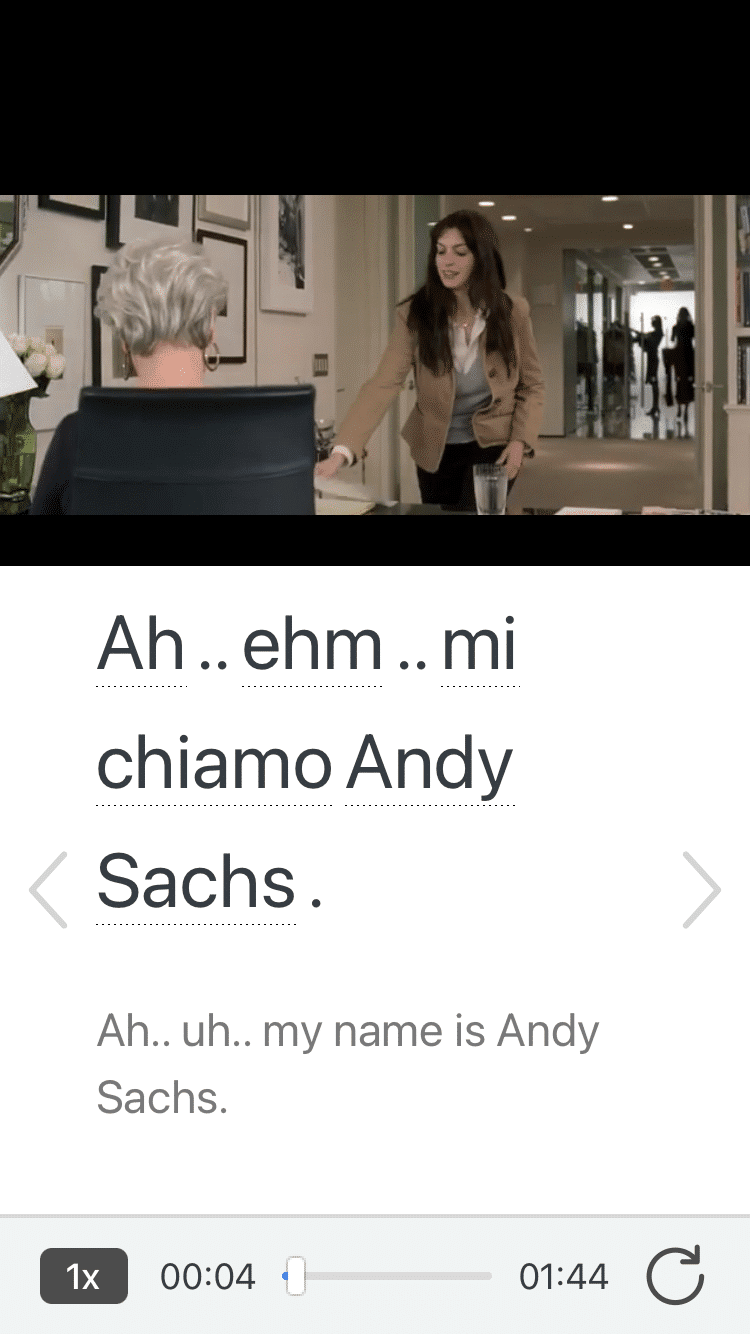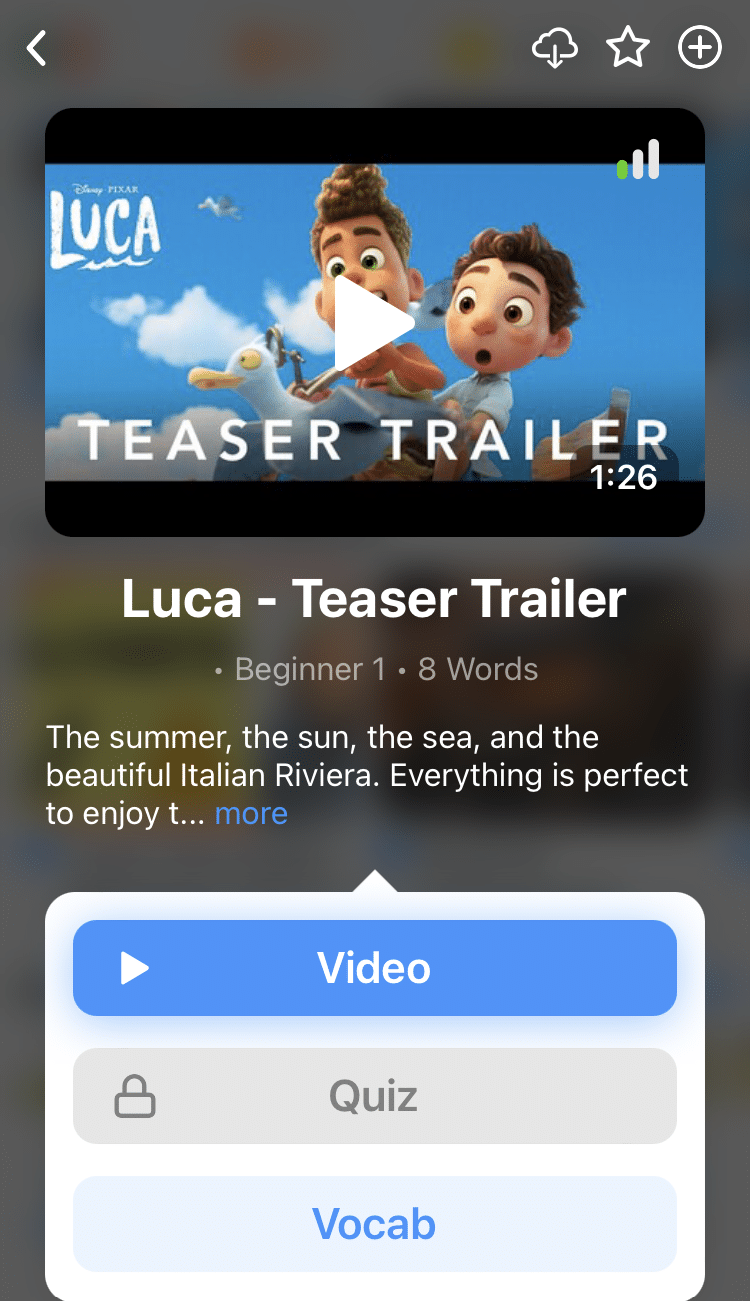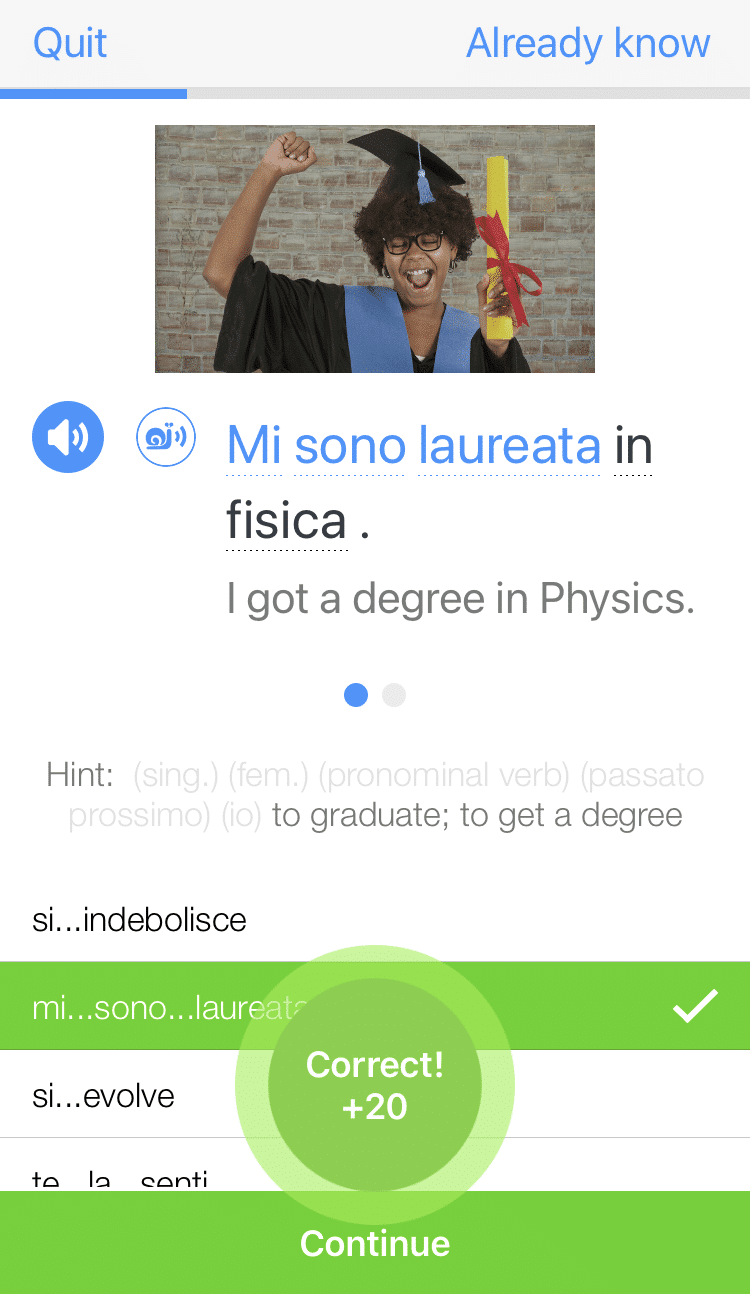
Italian Adverbs: The Complete Guide [with Audio and Resources]
Adverbs let you explain how frantically the bicycle thief fled the scene. Or how ardently the postal worker loved the barmaid.
With adverbs, you can describe all sorts of dramatic things.
Today, I’ll help you do it in Italian, too!
In this article, you’ll learn how to form Italian sentences with adverbs, three main types of adverbs with key vocabulary and where you can practice putting your new skills to use.
Contents
- What’s an Adverb?
- 3 Types of Italian Adverbs with Examples
- Rules for Using Adverbs in an Italian Sentence
- Where to Practice Using Italian Adverbs
- And One More Thing...
Download: This blog post is available as a convenient and portable PDF that you can take anywhere. Click here to get a copy. (Download)
What’s an Adverb?
An adverb is a describing word used to modify a verb. It’s distinct from an adjective, which is a describing word that modifies a noun. This rule applies in both English and Italian.
In English, adverbs usually end in -ly (e.g. slowly). In Italian, adverbs usually end in -mente (e.g. lentamente, or “slowly”).
Of course, there are some exceptions, but they’re easy to learn and we’ll discuss them in depth throughout this article.
3 Types of Italian Adverbs with Examples
1. Adverbs That Come from Adjectives
To turn an adjective into an adverb, take the feminine form of an adjective that ends in -o and add -mente. For adjectives that end in -e, keep the spelling the same and add -mente.
For example, if you wanted to turn lento (slow) into an adverb, you would take the feminine form of lento, which is lenta, and add -mente to get lentamente .
Here’s lento used as an adjective:
Il servizio in questo ristorante è lento. — The service in this restaurant is slow.
Now let’s turn it into an adverb:
Lui cammina lentamente. — He walks slowly.
Here, lentamente is an adverb that modifies the verb cammina (walks).
It’s also important to note that you can often use some simple adjectives as adverbs without changing their forms.
For example:
Tu cammini lento . — You walk slowly.
Parlano troppo veloce . — They speak too fast.
Dovete mangiare sano . — You have to eat healthy.
We already saw an example of an adjective ending in -e turned into an adverb— felice (happy) becomes felicemente (happily).
Some common adverbs of this type include:
facilmente (easily)
generalmente (generally)
gentilmente (kindly)
rapidamente (rapidly)
veramente (truly)
2. Simple Adverbs
Simply put, simple adverbs are adverbs that aren’t formed from adjectives. You just have to memorize what they are.
For beginners, these little words may be hard to remember. Often it seems like you can understand a sentence without them. But they’re actually info-packed, and being able to use them will improve your Italian immensely.
Below are some examples of Italian simple adverbs, with sample sentences to show you how they’re used.
Attorno (around):
Potete guardarvi attorno. — You can take a look around.
Bene (well):
Bene is one of the most commonly used adverbs in Italian. You use it to say that someone is doing something well.
Luciano canta bene. — Luciano sings well.
Marco non canta bene. — Marco does not sing well.
Andrea ha cantato bene stasera? — Did Andrea sing well tonight?
Si, lui ha cantato molto bene. — Yes, he sang very well.
Contro (against):
Credo che voterò contro. — I think I’m going to vote against.
Dentro (inside):
È ora di andare dentro. — It’s time to go inside.
Dietro (behind):
C’è qualcosa qui dietro. — There is something behind here.
Dopo (after):
Ci vediamo dopo, okay? — See you later, okay?
Insieme (together):
Andiamo insieme. — Let’s go together.
mai (never):
Non ho mai visto “La Dolce Vita.” — I have never seen “La Dolce Vita.”
più (Not… anymore):
Non sono più attore. — I’m no longer an actor.
Oltre (beyond):
Non vuole andare oltre, è stanca. — She doesn’t want to go any further, she’s tired.
Non potevamo rimanere oltre. — They couldn’t stay any longer.
Sempre (always):
Loro sono sempre insieme — They are always together.
3. Interrogative Adverbs
You’ve probably already used interrogative adverbs all the time without knowing it. Interrogative adverbs in Italian are the “question words” used at the beginning of a question. These words include:
- Come — How
- Come mai — How come
- Quando — When
- Perché — Why
- Dove — Where
- Di dove — From where
- Quanto — How much/how many
In the examples below, notice how the interrogative adverb appears at the beginning of the sentence in both the present and past tense, as well as in a negative question.
Quando mangiamo la cena? – When are we eating dinner?
Quando avete mangiato la cena? – When did you (plural) eat dinner?
Perché non hai assaggiato il lampredotto? – Why didn’t you try the lampredotto (tripe sandwich from Florence)?
Some common adverbs of time and place are:
oggi (today)
domani (tomorrow)
ieri (yesterday)
là (there)
qui (here)
It’s important to note that rules for Italian adverbs of frequency are quite different from how you use them in English.
Here’s a guide to memorizing different types of adverbs:
- avverbi di modo o maniera (adverbs of manner)
These adverbs describe either how/in what way the action is being done. - avverbi di tempo (adverbs of time)
Adverbs of time describe when something happened or will happen. - avverbi di luogo (adverbs of place)
Adverbs of place describe where the action happens. - avverbi di quantità (adverbs of quantity)
These typically answer the question “how much?”. - avverbi di giudizio (adverbs of modality)
Adverbs of modality affirm or negate action, or communicate doubt, uncertainty, or exclusion.
Rules for Using Adverbs in an Italian Sentence
Basic Word Order Rules
As a general rule, adverbs directly follow the verb they’re modifying. Take a look at this example in the tempo presente (present tense):
Lui balla male. — He dances badly.
In the passato prossimo (a super-common Italian past tense), the adverb directly follows the past participle:
Lui ha ballato male. — He danced badly.
Now that we have those basic word order rules down, let’s incorporate more grammatical building blocks.
When There’s an Object
If there’s an object in the sentence, the adverb still follows the verb or past participle:
L’attrice ha ballato felicemente nella Fontana di Trevi. — The actress danced happily in the Trevi Fountain.
Simple enough!
In a Question
In the context of a question, the adverb can go at the beginning or the end of a sentence.
Tu ti trucchi ancora? — Are you still putting on your makeup?
Here, ancora (still) is the adverb.
When using an interrogative adverb (a.k.a. “question words”—more on those later) you place the adverb at the beginning of the sentence.
Quando andiamo a teatro? — When are we going to the theater?
Here, the interrogative adverb quando (when) is at the beginning of the sentence.
Word Order with C’è or Ci sono
The word order changes slightly when the sentence starts with c’è or ci sono (there is/there are).
In this case, the word order is: subject + object + adverb + rest of the sentence.
For example:
C’è una festa dopo la cerimonia di laurea. — There’s a party after the graduation ceremony.
Ci sono coniglietto fuori! — There is a bunny outside!
In pretty much every instance, a simple adverb will be used in conjunction with c’é or ci sono.
Word Order with Già
Another exception to the usual word order is the adverb già (already). Già goes before the verb.
Ma mamma, ho già fatto i compiti! — But mom, I already did my homework!
Hai già lavato i piatti? — Did you already wash the dishes?
But if you want to underline the concept of time going by, you can also put it after the verb.
Andiamo, è già tardi. — Come on, it’s already late.
For more on Italian grammar, check out this post:
The Complete Guide to Italian Grammar | FluentU Italian
Learning the basic rules of Italian grammar is a lot simpler than you might imagine, and in this post it is about to get way simpler. You will walk away from this read…
Where to Practice Using Italian Adverbs
If you would like to put that dramatic adverb knowledge to the test, here’s a list of online quizzes that you can take.
- Online Italian Club has an adverb quiz in which you have to type the correctly spelled adverb from a set of adjectives.
- One World Italiano has an adverb quiz in which you select the appropriate adverb from a multiple choice list.
- FluentU lets you hear how adverbs are used in real-life contexts.
FluentU takes authentic videos—like music videos, movie trailers, news and inspiring talks—and turns them into personalized language learning lessons.
You can try FluentU for free for 2 weeks. Check out the website or download the iOS app or Android app.
P.S. Click here to take advantage of our current sale! (Expires at the end of this month.)
With a little practice, you’ll see that adverbs are quite easy to learn and by correctly using them, your spoken and written Italian will sound much more fluent.
Download: This blog post is available as a convenient and portable PDF that you can take anywhere. Click here to get a copy. (Download)
And One More Thing...
If you're as busy as most of us, you don't always have time for lengthy language lessons. The solution? FluentU!
Learn Italian with funny commericals, documentary excerpts and web series, as you can see here:

FluentU helps you get comfortable with everyday Italian by combining all the benefits of complete immersion and native-level conversations with interactive subtitles. Tap on any word to instantly see an image, in-context definition, example sentences and other videos in which the word is used.

Access a complete interactive transcript of every video under the Dialogue tab, and review words and phrases with convenient audio clips under Vocab.

Once you've watched a video, you can use FluentU's quizzes to actively practice all the vocabulary in that video. Swipe left or right to see more examples of the word you’re on.

FluentU will even keep track of all the Italian words you’re learning, and give you extra practice with difficult words. Plus, it'll tell you exactly when it's time for review. Now that's a 100% personalized experience!
The best part? You can try FluentU for free with a trial.
Start using the FluentU website on your computer or tablet or, better yet, download the FluentU app from the iTunes or Google Play store. Click here to take advantage of our current sale! (Expires at the end of this month.)



